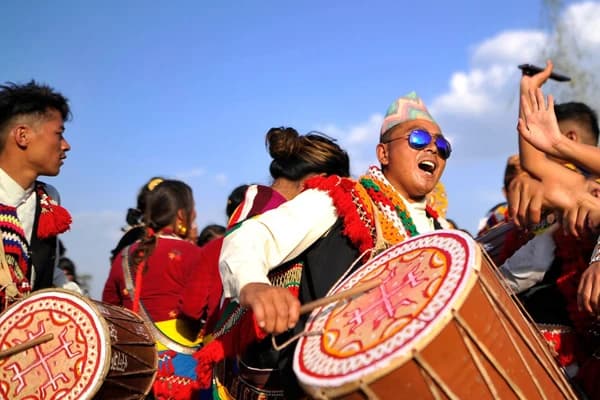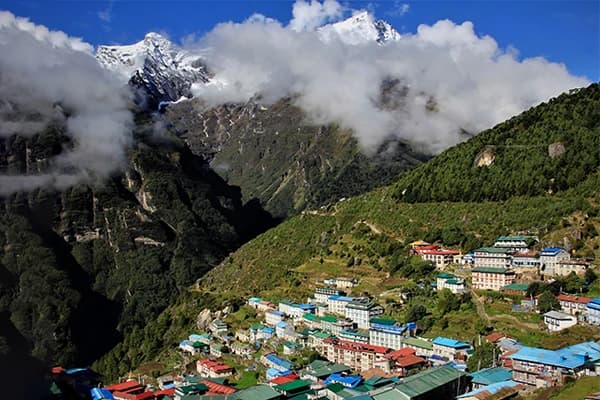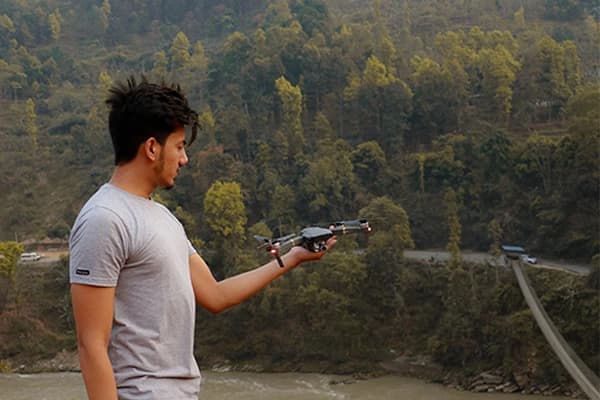Beauty of Langtang Village
Langtang village is surrounded by peaks like Langtang Lirung, Ganesh Himal, and Dorje Lakpa. The trekkers who trek to the Langtang village will get the opportunity to witness the spectacular panoramic views of the mountains along with other natural resources.
There are numerous glaciers near the Langtang village. One of the popular glaciers is Langtang Lirung Glacier. All these glaciers feed the river and add the alpine charm to the surrounding area.
This settlement offers the sounds of flowing rivers like the Trishuli River and Bhote Koshi River and waterfalls. When the sound mixes with the serene mountain landscapes, then it creates the tranquil atmosphere and a peaceful retreat for its visitors.
The biodiversity around the Langtang village supports the rare and endangered wildlife, including red pandas, snow leopards, Himalayan tahr, musk deer, and over 200 bird species.
On the other hand, the village itself is home to the Tamang peoples, who are known for their rich Tibetan Buddhist culture, unique lifestyle, customs, and cuisines. All these blending in one place is the true beauty of the village and region itself.
Langtang's Peoples, Cultures, and Local lifestyles
The Langtang village is predominantly inhabited by the Tamang communities. The name Tamang translates to "horse warriors, which links the community to the ancient horse trading or cavalry professions from Tibetan culture.
There are also other peoples residing in the Langtang village. I.e., the Tibetan refugee community who fled from Tibet during the 1959 Chinese invasion. They also have contributed to the local cultures through their handicrafts, Tibetan Buddhism, and tourism-related businesses.
The people of the Langtang village (Tamangs) mainly follow Tibetan Buddhism combined with Animism and Shamanism. All the ceremonies, including sky burial rituals, are led by lamas and bombo shamans. The main language spoken here is Nepali, and some English too (especially in tourist areas).
Most of the people here are engaged in subsistence farming (potatoes, barley, millet), livestock rearing (yaks, sheep), and tourism.
Talking about the culture, the Tamang Selo dance and the Damphu drum are popular in Langtang Village. These music and dances are integral to the several celebrations and rituals.
Some of the popular festivals celebrated here are tamang losar, Langtang Trek Festival, Chyamgi Puja (Horse Festival), buddha jayanti, janai purnima, and so on.
The Langtang peoples love to eat staple foods like dhindo (millet or corn porridge), gundruk (fermented leafy greens), dal bhat (lentils with rice), yak butter tea, and yak cheese. These foods are their daily diets.
Langtang's Tragedy and Resilience: The 2015 Earthquake
On April 25, 2015, a 7.8 magnitude earthquake struck Nepal, including Langtang village, which triggered a massive avalanche from the slopes of Langtang Lirung. The avalanche released millions of tons of rock and ice that almost buried Langtang village.
In that tragedy, about 300 people, including locals and foreigners, lost their lives in Langtang alone. The earthquake and avalanche crushed traditional stone houses and destroyed cultural landmarks.
There were lots of challenges to be fought for the rescue and recovery in the Langtang village. The remote nature of the village, only accessible by the multi-day trek, makes it more difficult to bring in heavy machinery or large-scale aid.
The earthquake not only erased buildings but also threatened the very fabric of Langtang's cultural heritage.
However, the people of the Langtang village showed great resilience and faced the tragedy. With the support of the Nepalese government, international aid organizations, and volunteers, the new Langtang village was constructed a short distance above the ruins of the old one.
The tourism business was re-established. The homes, lodges, and essential infrastructure were rebuilt with earthquake-resistant technology. After the restoration of the trekking trails, the village’s economic life returned to a healthy position.
There can be huge differences seen in Langtang village before and after the disaster. However, as of now, the Langtang village has been a vibrant stop on Nepal’s trekking circuit. The rebuilt teahouses and lodges host hundreds of tourists daily.
Trekking to Langtang Village in Nepal
Trekking to the Langtang village is a way to reach there. It is a rewarding journey that offers stunning Himalayan vistas, vibrant Tamang culture, and a serene atmosphere.
The Langtang village trek starts with a drive from Kathmandu to Syabrubesi (a trailhead of the Langtang Valley trek). It will take around 77-8 hours to reach the Syabrubesi. From the Syabrubesi, you have to trek through the lush rhododendron and bamboo forests, following the Langtang River.
After reaching the Langtang village, you can rest there, spend a night, and return, or you can also hike further.
Below is the general itinerary.
- Day 1: Drive from Kathmandu to Syabrubesi
- Day 2: Trek Syabrubesi to Lama Hotel
- Day 3: Trek from Lama Hotel to Langtang Village
- Day 4: Return or trek to Kyanjin Gompa
- Day 5: Acclimatization/Side trips (e.g., Tserko Ri) (optional)
- Day 6: Return via the same route to Syabrubesi (optional) and drive back to Kathmandu.
You can expect the views of the snowcapped peaks like Langtang Lirung, Langtang Ri, and Dorje Lakpa, along with the opportunities for cultural immersion and wildlife spotting. Overall, the trek is moderate, and people with a reasonable fitness level can go for the trek.
The best time to visit the Langtang Valley is during the spring or the autumn season. These seasons offer medium weather conditions with the least rainfall, mild temperatures, and clear skies.
Why Visit Langtang Village in Nepal Today?
Visiting the Langtang village today offers you several advantages and opportunities.
- The trails are less crowded than the popular trails like everest base camp and annapurna base camp treks.
- Traveling offers the stunning Himalayan landscapes, including views of Mt. Langtang Lirung and other peaks, glaciers, rivers, and waterfalls.
- The village features the Buddhist monasteries and chortens.
- The village is closer to Kathmandu, making it more accessible than other popular trekking destinations.
- The Langtang is generally budget-friendly and does not require the additional logistics.
- The village offers authentic Tibetan Buddhist culture and traditions in a serene setting.
- You will get an opportunity to contribute to the Langtang economy by staying in their lodges and buying souvenirs made by them.
Want to be part of a story that inspires? Trek to Langtang — village in Nepal where every step supports a comeback.





